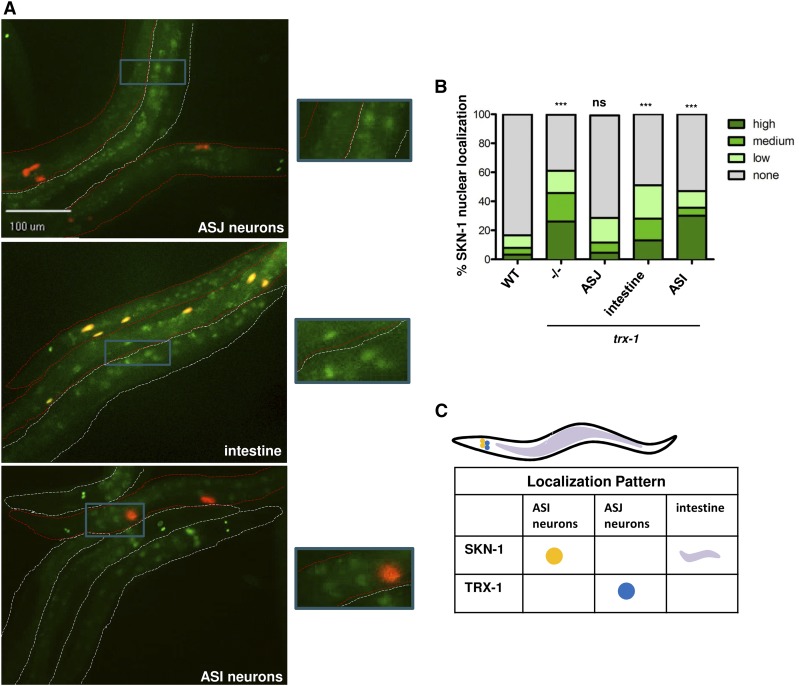Figure 3.
TRX-1 regulates SKN-1 nuclear localization cell non-autonomously. (A) Fluorescence microscopy was used to analyze intestinal SKN-1 nuclear localization upon rescue of trx-1 expression in specific tissues in trx-1; skn-1b/c::gfp animals. Worms outlined in red expressed wild-type trx-1 under the regulation of a promoter specific for the designated tissue. Nontransgenic worms (outlined in white) had a trx-1; skn-1b/c::gfp genotype and served as internal controls. Only expression of trx-1 in the ASJ neurons rescued proper intestinal SKN-1::GFP nuclear localization. Worms were visualized using a 20× objective. Blue boxes indicate the portion of the micrograph field that is magnified in the boxes to the right of each micrograph. (B) Percentage of SKN-1::GFP nuclear localization was categorically scored and quantified as described in Materials and Methods. Percentages are an average of three biological replicates (n ≥ 35 worms per replicate). The trx-1 mutant exhibited a threefold increase in the percentage of intestinal SKN-1::GFP nuclear localization (P-value < 0.0001 as compared to wild type). The increased SKN-1::GFP nuclear localization seen upon loss of trx-1 could be fully rescued with specific expression of trx-1 in the ASJ neurons (P-value = 0.2377, as compared to wild type). Rescue of trx-1 expression in the intestine and ASI neurons did not restore proper SKN-1 nuclear localization (P-value < 0.0001 and P-value < 0.0001 as compared to wild type, respectively). (C) A schematic depicting the tissue localization of TRX-1 and SKN-1, emphasizing the absence of overlapping tissue expression between these two proteins. The ability of ASJ-expressed TRX-1 to regulate intestinal SKN-1 nuclear localization indicates a mechanism of cell non-autonomous regulation.

